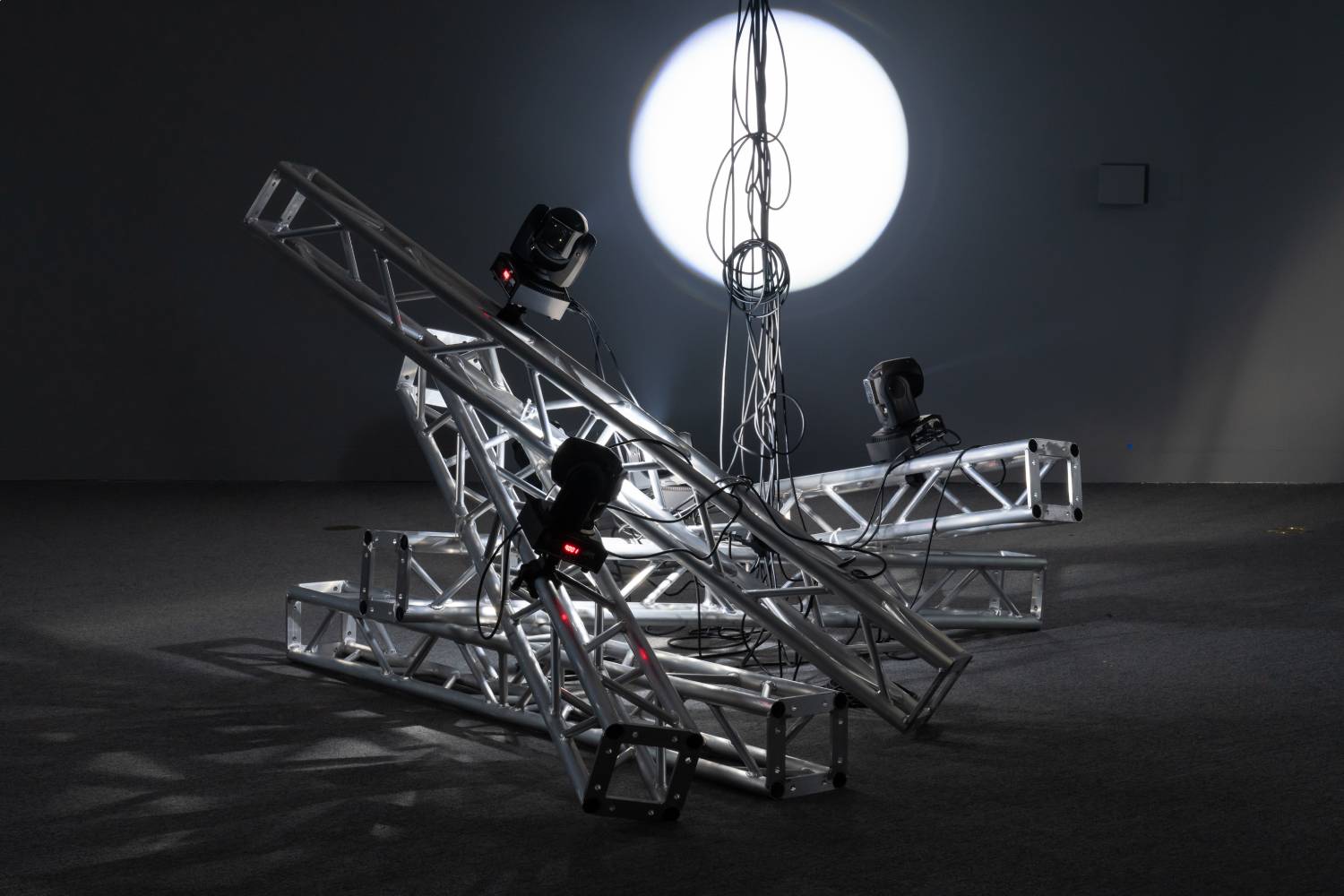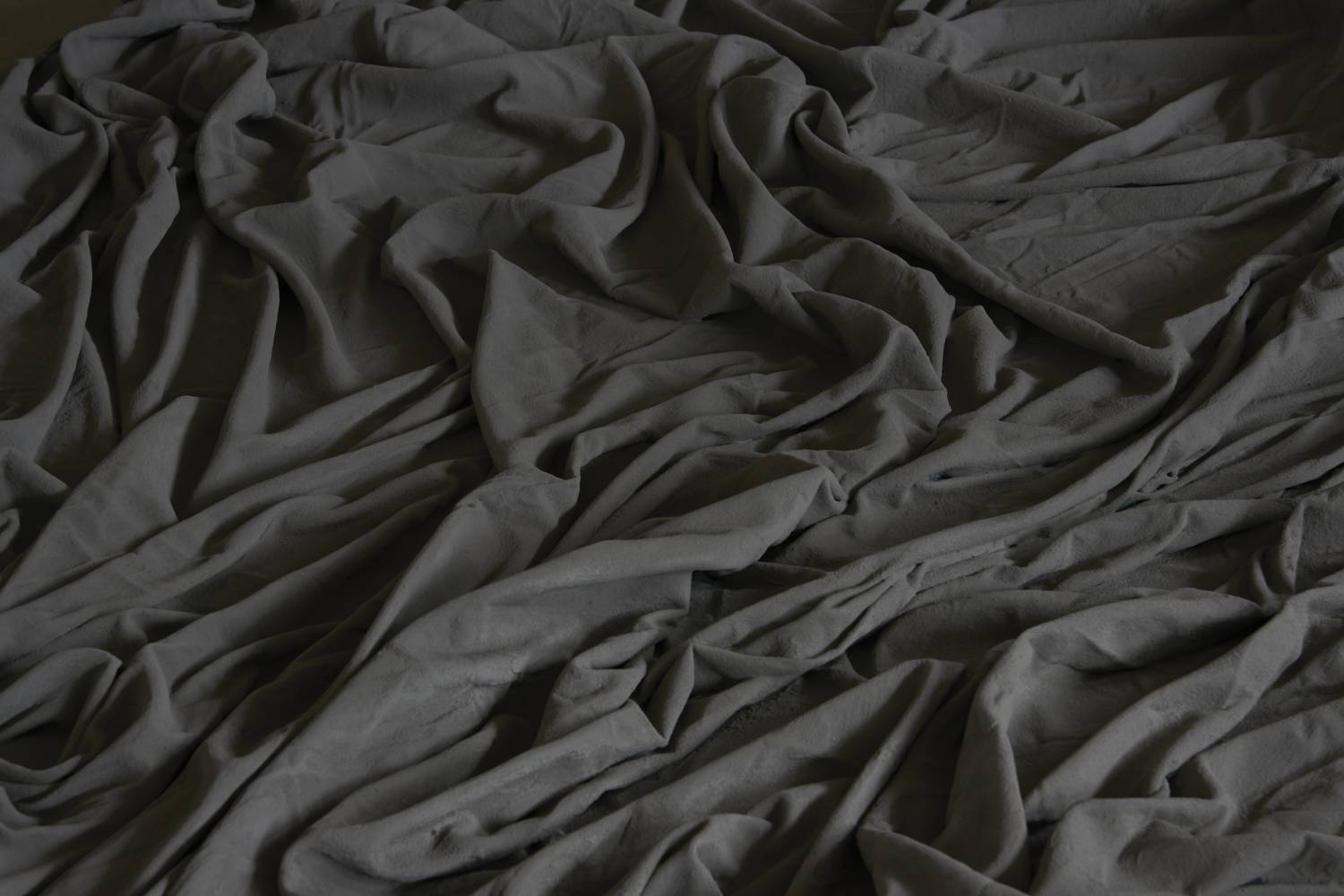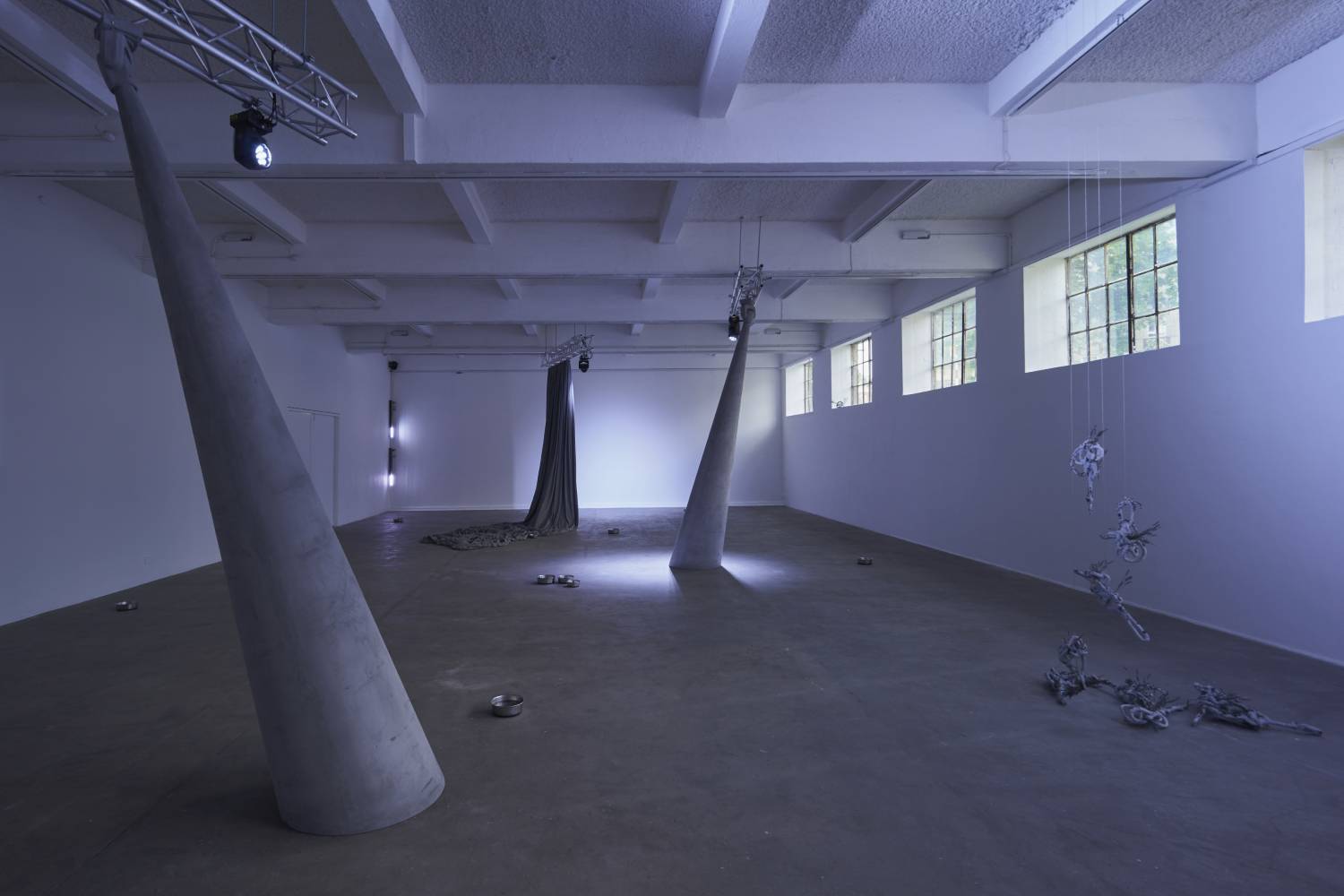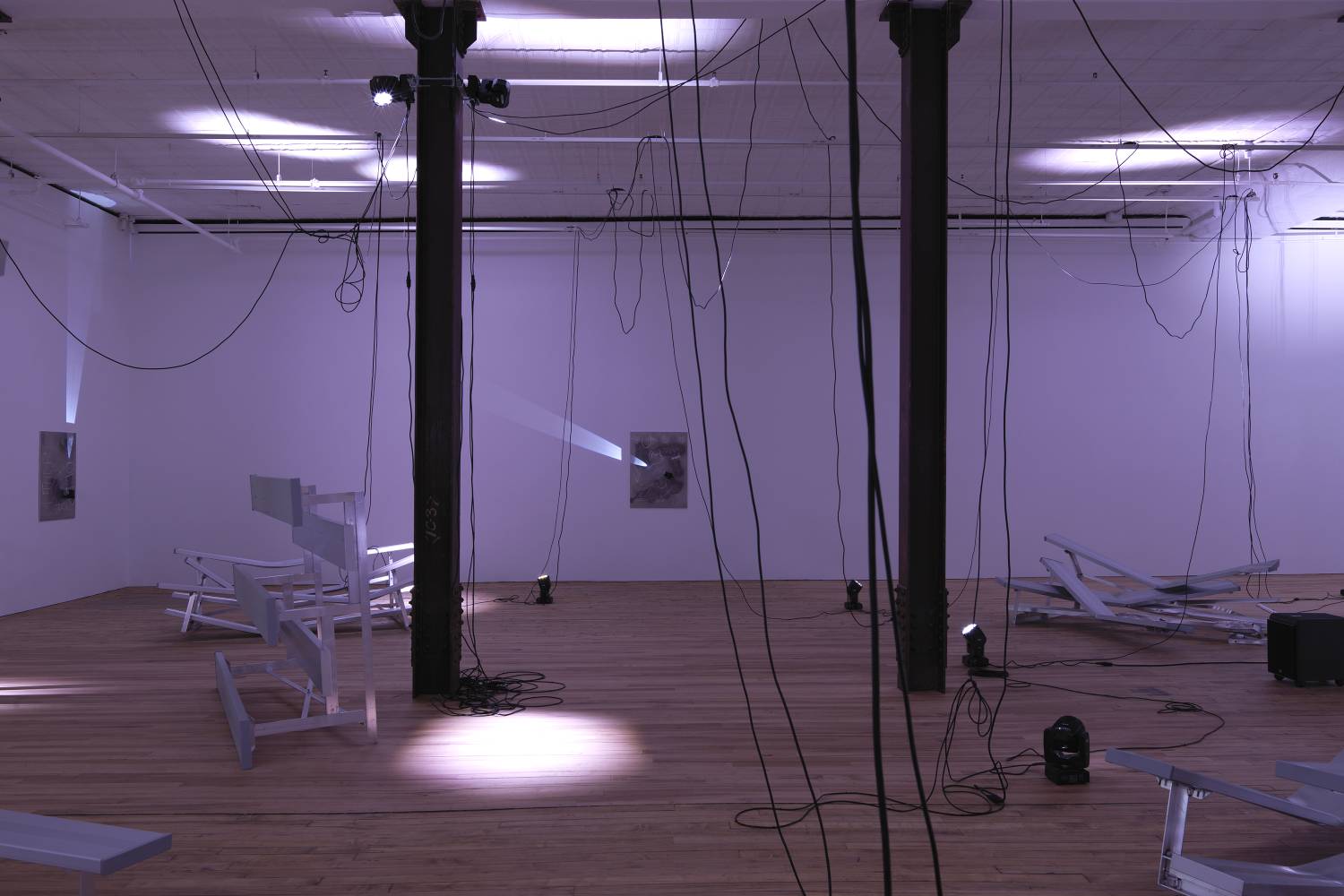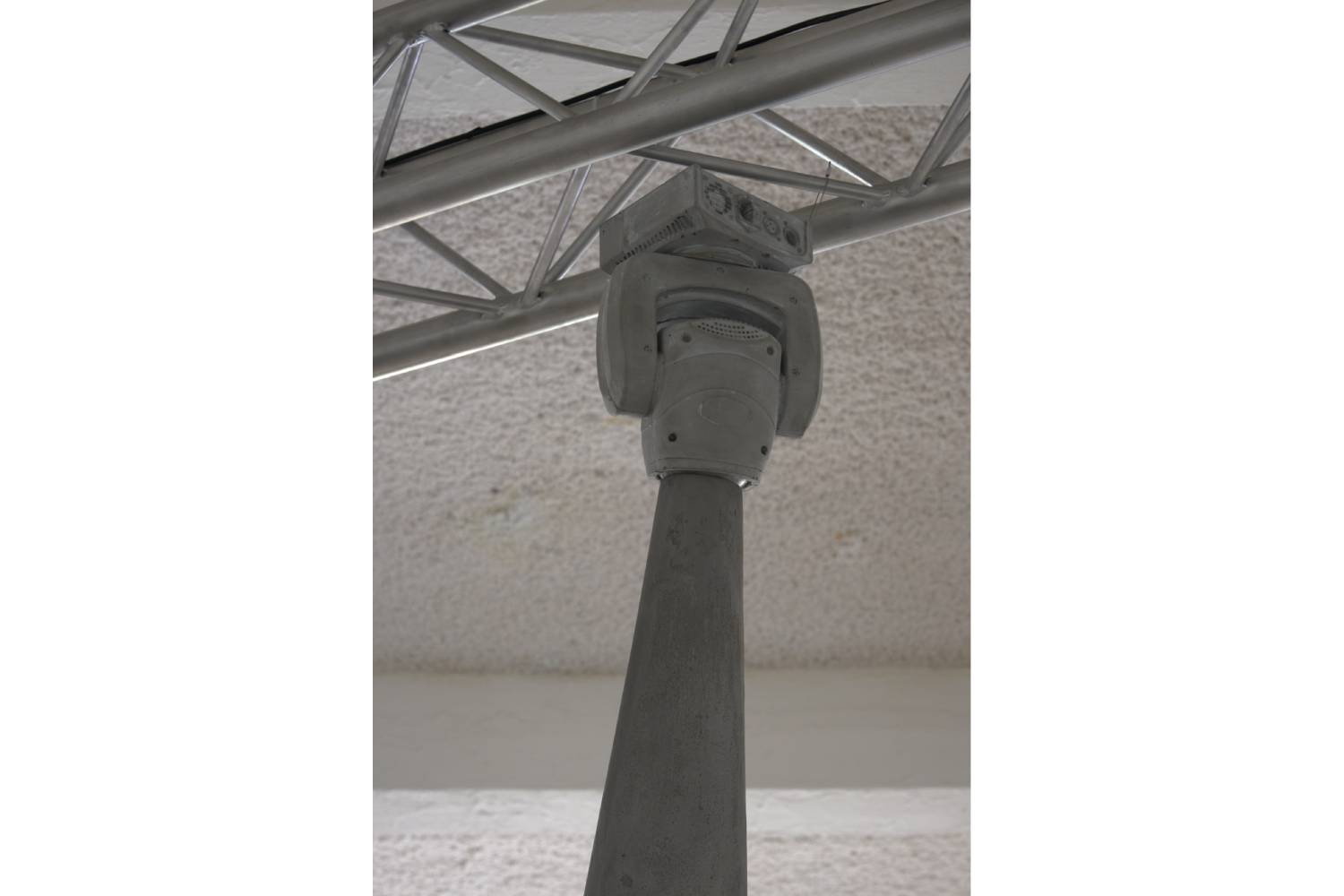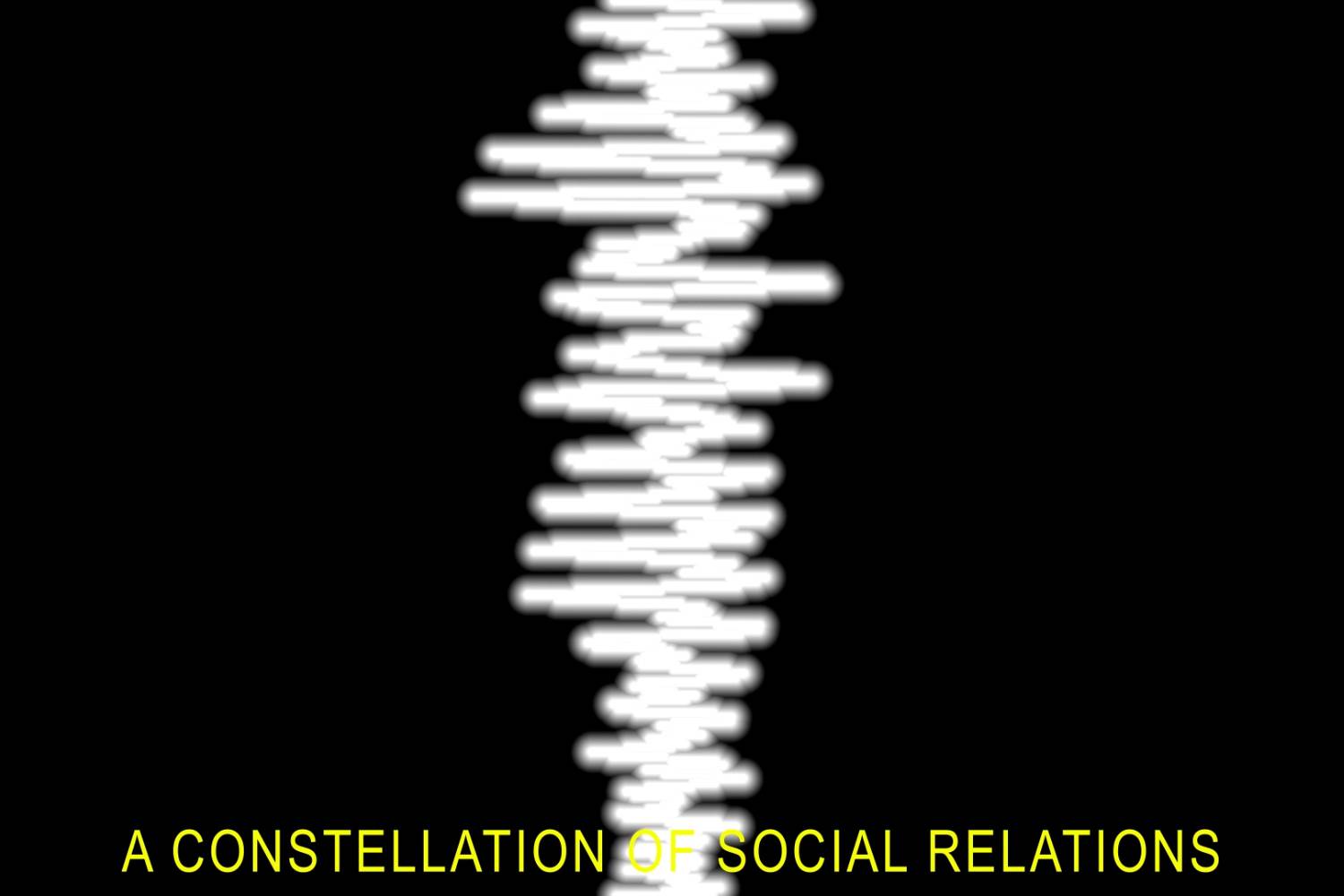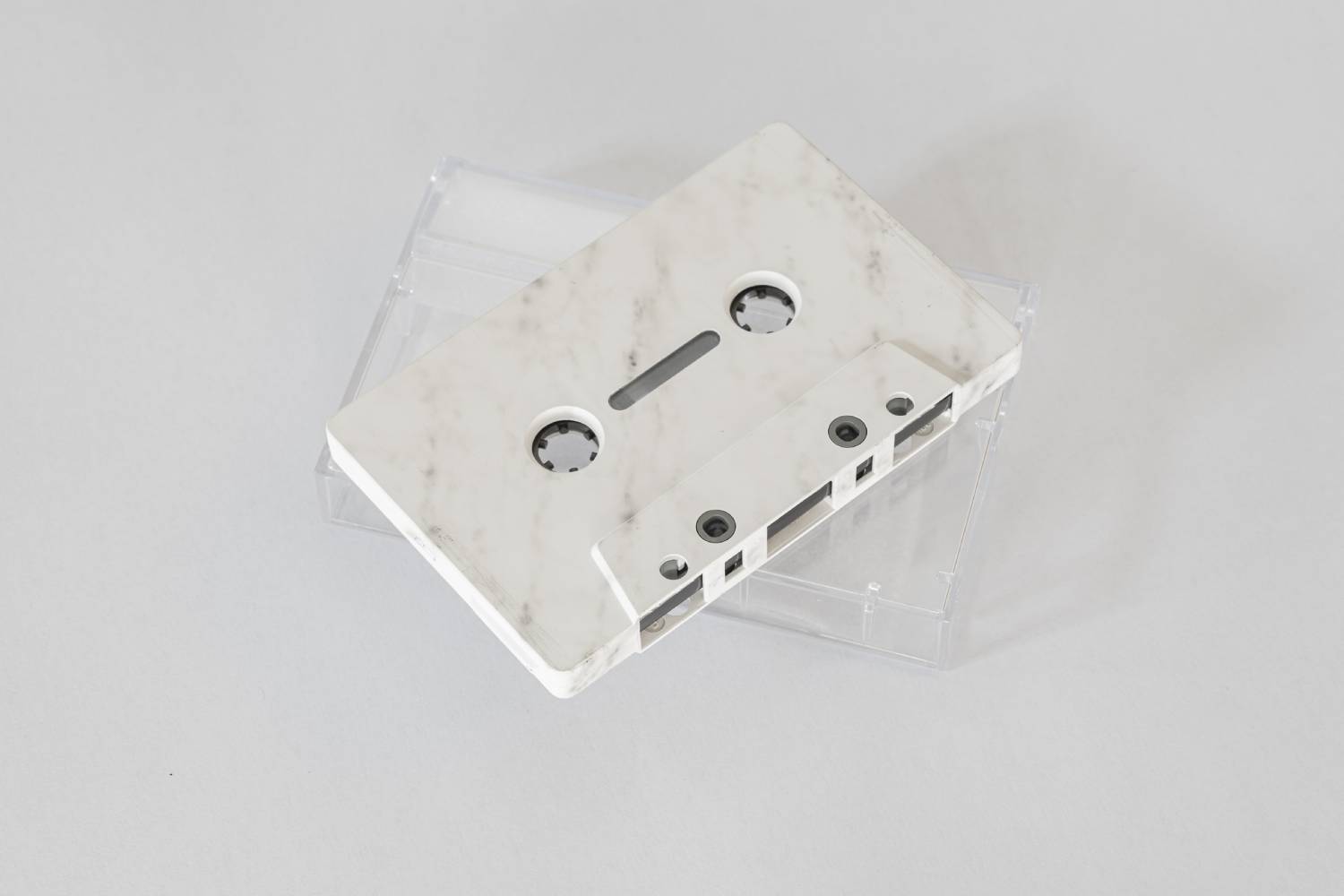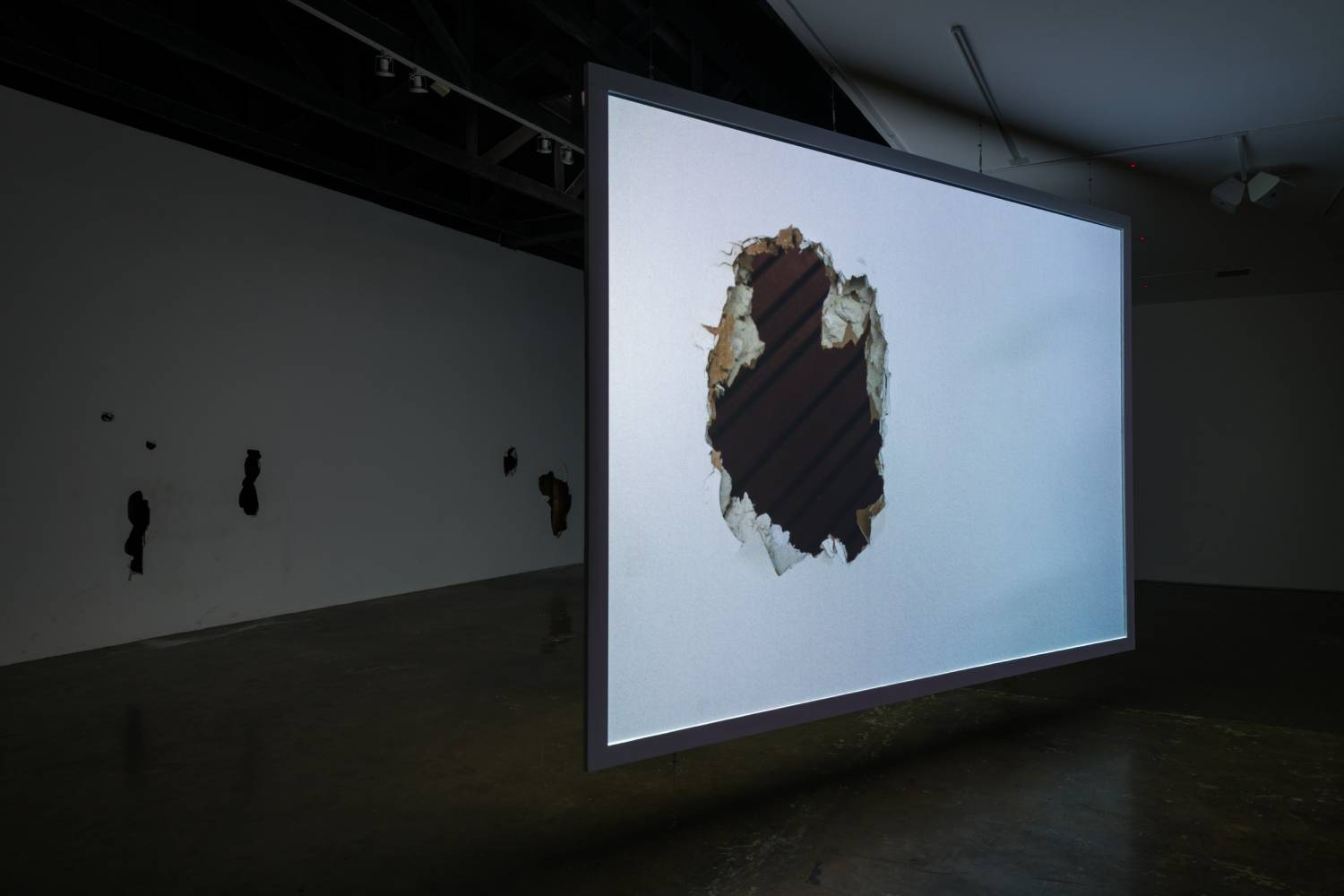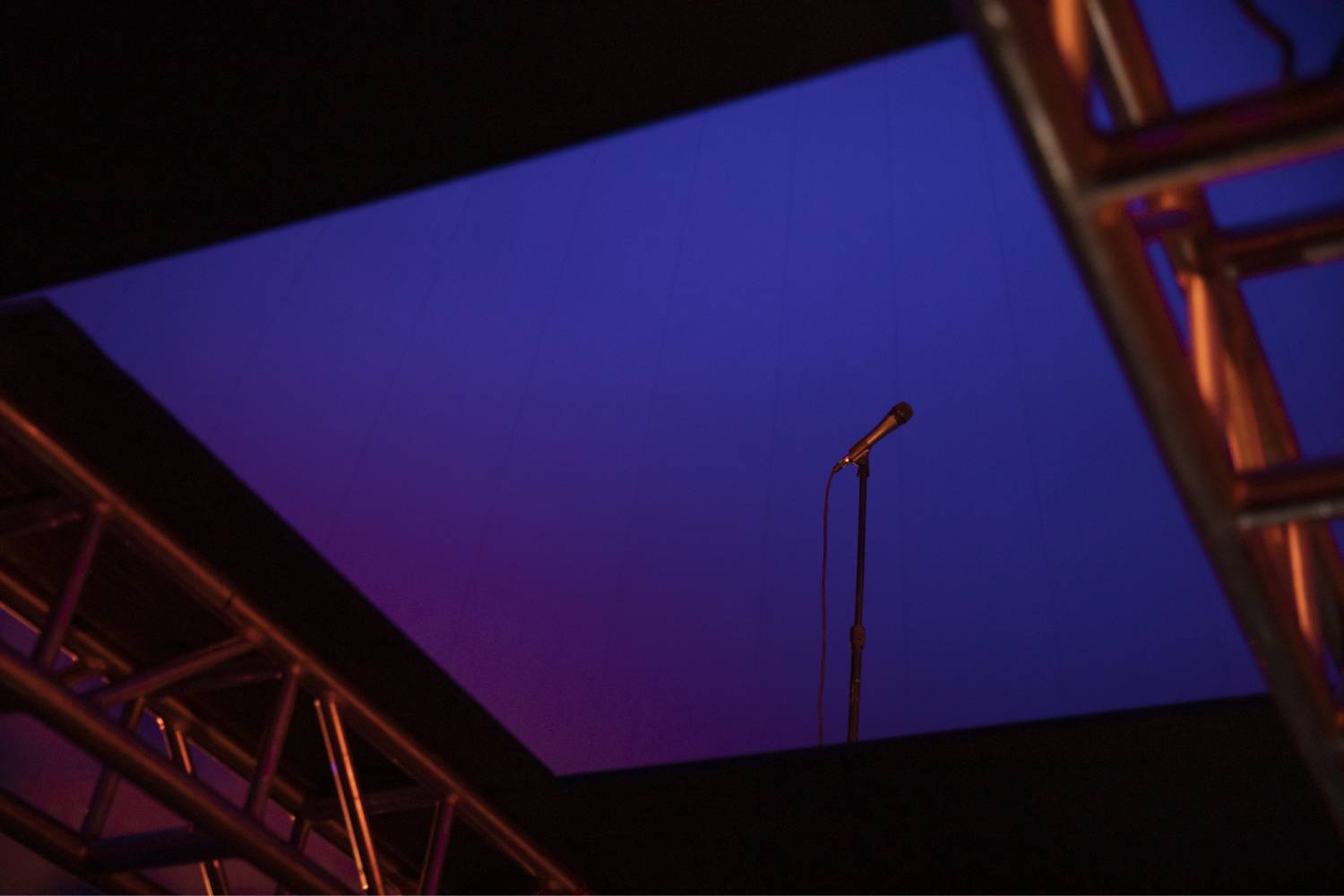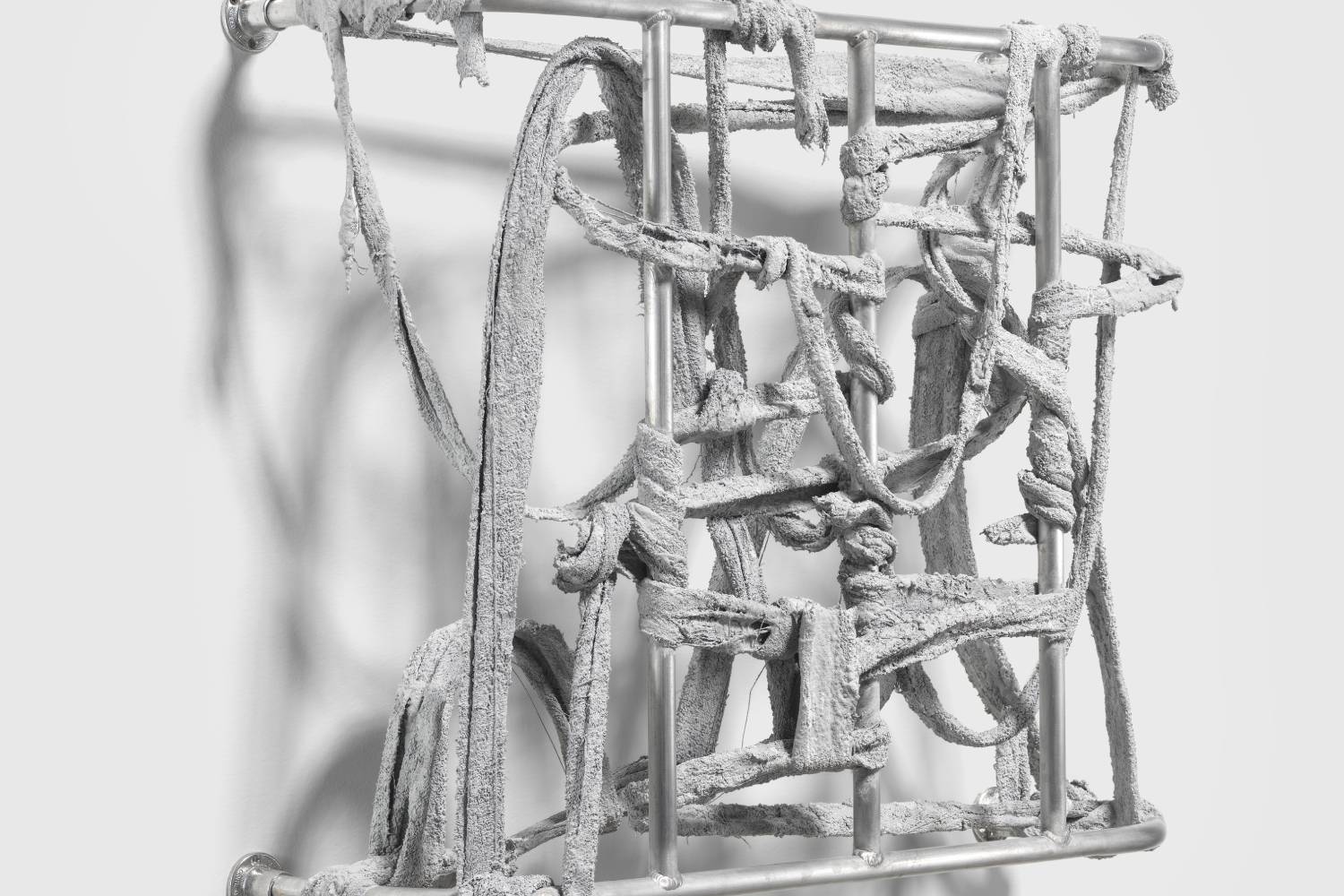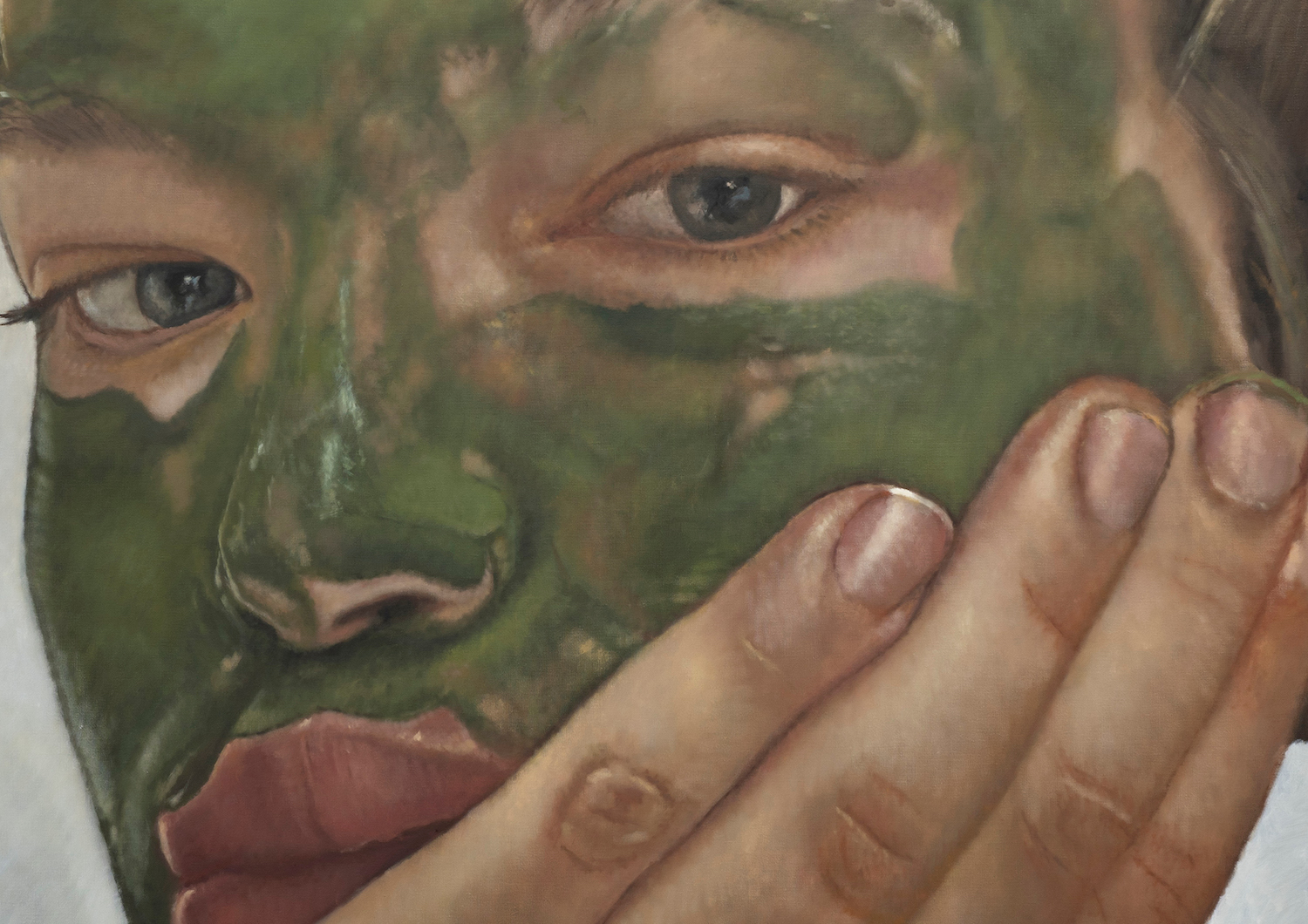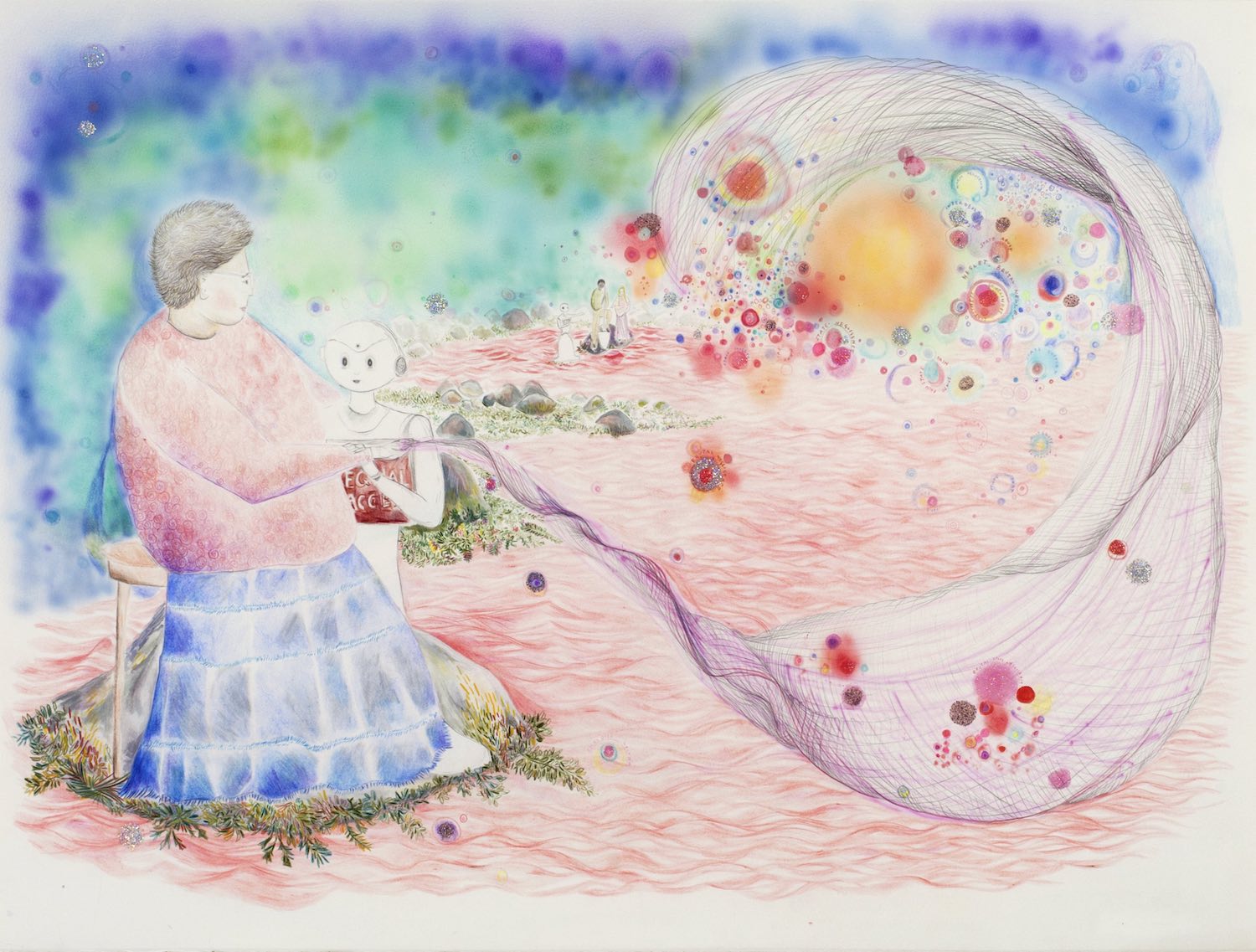The trouble with theory in the encounter of art is a serious one. Exegesis has in many cases taken up the place that art should occupy, such that one has the unsettling feeling that the gallery or exhibition space has become merely the physicalization of an academic journal — and, usually, a rather bad academic journal. What all these explanations and justifications — all these footnotes — are really doing is distracting the viewer from a possible absence at the core of things, and then, through a brazen act of manipulation, proceeding to intimidate the viewer into submission to its overwhelming, inexhaustible logic, a logic that is more logorrhea than anything else, a sort of theory by way of schizophrenic associations. Even what I have just said has its obvious art-critical rejoinder: But isn’t that the “reality” of final-stage capital? Distraction and intimidation administered through fascist demands cloaked in logorrheic streams of wordnonsense vying for meaning, and persisting in spite of their failure to attain it? Isn’t the material of the work of art the historical moment in which it situates itself, mediated through politics and identity, always in flux, ultimately nonsense in and of itself? Thus the explanation and the justification could rightly be considered the work of art itself, or at least a necessary and/or natural part of it…
As I write the above, I think about how long I could write in that mode — how many reversals and sinkholes and slipslides and new burrows and climbing ropes I could find, just following that one thought, like a game, like an obstacle course. But beauty is not a game.
The work of Nikita Gale is kind of protected by this hard, smart shell of theory — maybe by supposed necessity, I really don’t know. But the instructive thing, the surprising thing, is that here is a body of work that, though it is surrounded by a glut of charming, compelling theory, actually does not need its justification. Nikita Gale’s work, for all its throat-clearing, for all its accompanying text, is, quite simply, beautiful. And, as with all beautiful things, this work demands something beautiful of us.
MARMI (2022) is particularly stunning. A working cassette tape cast from marble, the object itself has a quiet and estranging quality; confounding, but equally inviting; a monumental materiality made intimate in the shape it takes and the function it points toward and in fact retains — the stone is speaking to you, and given that the sound recording that it holds is the vocalization of a marble quarry, the stone is not only speaking to you… it is speaking itself to you. Who knew such tenderness and flexibility could be drawn forth from the rock? Or that the rock itself was only waiting to be asked what it had to say? Though the audio sometimes suffered from an over-manipulation edging it toward contemporary indie music, such indulgences were forestalled by a greater instinct of the artist — the soundscape is hollowness crying out for fullness resolving to silence, fracturing into confusion, disrepair, crying, needing — and then a reconstitution into harmony, however tenuous. The vulnerability that Gale rediscovers in marble, Gale rediscovers simply by having the sense to ask marble a question, and then the patience, generally, to wait for its answer. The result is an artwork that feels, from the moment you encounter it, like a prayer. Gale’s sweet and subtle sitting results not only in a powerful work of art — it is, properly seen and received, an invitation to others who might have lost sense of the inherent suppleness and proneness and spiritual force of the material itself. Anyone who would wish to work with stone might find an unwitting tutor in MARMI, and, particularly, anyone who might otherwise be a captive of cleverness. Here is a reminder of the simple, stark, expressive quality of the thing. Here is a transcript of a material recalling us to its own qualities, of how it might be encountered, of an end and origin caught up ceaselessly in a physicality that finds and hides itself in human hands. “When you mine the depths,” the marble says, “listen to the depths you mine.”
That the Alaska-born artist connects so deeply with material qua material is unsurprising. Before receiving an MFA in New Genres at UCLA and pursuing further studies at the Skowhegan School of Painting and Sculpture, Gale studied archaeology at Yale, and is deeply versant in and adept at semiotic and cultural theoretical excavations. Gale has succeeded, though, in pulling forth academic and technical backgrounds into a praxis that finds its power in its ability to lift and hold and consider theory and artifact, and not be hamstrung by the effort. When Gale describes process, it feels gestational — images, thoughts, texts, concepts are gathered into a kind of colloquy, all surrounding or emerging from a central theme or question. There is an immersion period where all this theory and thought and idea and artifact have free reign. And then, it’s all let go. Gale sets to creation with a confidence that all this contemplation will bear authentic fruit in what the artist’s hands bring forth from all this disparate material. And that confidence has been richly rewarded. A body of work at once erudite and intuitive is the prize of a process that does not give preference to the head over the hand.
TAKERS (2022) is a looping video installment of two trained actors doing stage combat in what looks like a (bright) empty office space. As they fake fight and really sweat, they occasionally punch holes into what seems like a dummy, prop wall, designed for the purpose. When they strike holes into the wall, we twice sit with the wall’s perspective. When we are within that wall-point-of-view, the sounds of the struggle are more remote; what we hear instead is music, music that we couldn’t hear before — “Hound Dog” by Big Mama Thornton. It’s like taking a breath, but also like not really having been a part of anything from which one needed to take a breath, like never having been a part of anything at all…
This vantage is also a privileged view of what we wouldn’t normally see: the wall’s interior, as it were, its solemn, noise-absorbing guts. The wall is disinterested, uninvolved in the fighting that has pierced it, that has broken it open. But then again, this “fighting” wasn’t really fighting anyway, was it? Projected onto a double-sided screen hung in a (dark) empty office space, the viewer can do a 360-degree walk around the faux battle, mimicking the circling movement of the camera itself. That we can, accidentally, find ourselves mimicking the recording mechanism in the encounter of the installation resonates with the strangeness of what we are seeing. But it points us out to the deeper strangeness of the world beyond the indifferent, punctured walls set up to absorb and finally buckle under the abuse of human performance. Perhaps because of its title, TAKERS makes one wonder if the really odd thing isn’t its inverse mimicry in the world outside it: the way we pretend to love, and do not sweat; how we do so, allegedly, to leave walls untouched, pristine — as if it is walls, and not us, who cannot bear to be broken. IN A DREAM YOU CLIMB THE STAIRS (2022) is, for Gale, an exploration of the Circe myth as reconvened and reconstructed in Toni Morrison’s Song of Solomon1. Morrison’s Circe is a former midwife who, together with a pack of wild dogs, lives in the mansion of the greedy, murderous family she used to serve; her dying wish is to witness the total destruction and disintegration of the estate which symbolized and realized such evil in the world. Three structural elements command Gale’s installation space. Two are geometric columns shaped as searchlights; but because they are formed from concrete, gray and final, they seem like a kind of searchlight either frozen in time or else so structurally embedded that they have lost any efficacy, even as their domineering presence, their assertion, is preserved into seeming permanence. The third would-be column mimes or clowns the former two — it, too, is a searchlight-column, but it is not made from concrete; it is instead constructed of a soft, exhausted, hanging heavy fabric of the same hue. This third column is a revelation of the actual, if aggressively masked, inefficacy of its two partners in crime. The truth is that these searchlights, formed from a material that signifies power (albeit, importantly, power that cracks), are in reality powerless — they are structural and yet insignificant. The real play takes place outside the orbit of their sight. Lights, sometimes blue and electric, sometimes citrine yellow, vary in their dance of totality and movement, suffusing the space and also simultaneously circling, recalling the movement of police helicopter lights squirreling out a suspect. Yet after this rhythmic bathing and circling, the pulsing becomes intense, frenetic, like the search has become frantic, has broken down in a moment of abject hyper-assertion. A hanging sculpture of leashes stiffened into artifact by concrete is embedded with lavender for dogs that might visit and have their senses awakened. And there are metal bowls filled with water, perhaps for them also, if they wish it to be for them. As a viewer moves through the sculpture unseen, thoughts of Circe’s empty mansion might cross-fade into the empty myth of power itself — a power that claims to see and control what it can never truly see and control. A power that claims that what exists outside its orbit has no purchase on what it means to exist and move as human. Gale’s own commentary on the work is worth meditating on: “We’re in a moment now, especially in pop culture and media, where visibility is often misinterpreted as representation, when in fact it’s often just very exploitative. For me, silence and invisibility, or lack of visibility, are actually much more threatening and interesting positions to take up. Silence can mean something’s not there, but it can also mean something is there — lurking or listening, preparing, recharging, refusing.” A call to arms more radical than any that the culture is willing to abide — if only we might answer it, we might push past the gray, concrete poles of power as simply as we would push past a heavy, hanging fabric of the same hue.
AUDIENCING (2020) is one of Gale’s finest pieces, and it continues what could be seen as a formidable, multiwork inquiry into a society’s diverse responses, and possibilities for response, to systems of oppression. If TAKERS and IN A DREAM show the cracks in the edifice of power, both in its intimate (TAKERS) and more structural (DREAM) instantiations, then AUDIENCING gives us a picture of those who have submitted, a picture of submission itself. The title is evocative of a system that turns people into its audience, in which taking up a position as an audience member is somehow always tinged with — if not overwhelmed by — a sense of violence. This same theme is explored with variations in Gale’s 2022 installation at 52 Walker, END OF SUBJECT, in which a room is festooned with mostly overturned and snapped bleachers and a smattering of scattered ground lights, the wiring of which hangs haphazardly from the ceiling like sad streamers or like ropes one might hang oneself with. It looks like a kind of crime scene with the victims removed, and the sense of aftermath is enhanced by the fact that the windows at the artless end of the gallery space gleam with light, like the light at the end of the tunnel in a near-death experience.
In AUDIENCING, though, the victims are present. Audience members enter and sit beneath a large stage with instruments upon it, but no musicians — the stage, constructed of metal scaffolding, looks like a cage, and indeed, those gathered beneath it are packed in primly within its lines. They are not in rows; rather, they circle inward toward a central point, occupied by nothing. A beguiling mix of audio plays — past and recent pop hits from Rihanna, Tamia, Whitney Houston, Britney Spears, Lizzo; Michael Jackson studio sessions; a Bach selection; works of theory; the dramatist (and master of the absurd) Harold Pinter’s 2005 Nobel Prize lecture2. All of this audio is mixed and spliced oddly, and, especially in the case of the spoken audio, distorted often to the point of aural illegibility. Everything you hear is breaking down, buckling, cutting off suddenly and then starting again with a new track or the same track, with a new person speaking or the same person speaking. One spoken fragment sounds vaguely like an AI reader; others feel deeply, if disruptively, human. The audio regularly interrupts or speaks over itself, undermining itself in the process, so that all is reduced to a harvest of noise, easy to manipulate, easy to miss.
When Rihanna’s “Consideration” begins, it is a strange and stirring interlude. Two spoken recordings interrupt the song at certain intervals, so that her singing starts to feel like the plaintive cries of a broken bird, struggling to be heard amid the din of all that passes around it. “Please give my reflection a break from the face it’s seeing now,” she trills, “oh darling, would you mind giving my reflection a break from the pain it’s feeling now?” The male voices, one of them Harold Pinter, interrupt, and when those voices begin, Rihanna’s voice is cut off, though only temporarily. Her voice starts back up, where it left off. “You should just let me, why you ain’t ever let me grow?” Pinter’s voice has continued throughout; Rihanna’s track, as if a bit exhausted, cuts out. But then, somehow impossibly revived and in the midst of Pinter’s talking, Rihanna’s voice starts up again: “You should just let me, why you ain’t ever let me grow?” And this interplay continues, Rihanna stopping and starting, the audio of her track large and clear, even a little blown out, even as it is being spoken over and through. “When I look outside my window, I can’t get no peace of mind. When I look outside my window, I can’t get no peace of mind. Gettin’ no peace… ” Rihanna’s voice is like an artifact from a former time, like a prayer and a hope extracted from the noise of our ruins. How strange that later in that Nobel speech, Pinter responded directly to her lament. “When we look into a mirror,” he said, “we think the image that confronts us is accurate. But move a millimeter and the image changes. We are actually looking at a never-ending range of reflections. But sometimes a writer has to smash the mirror — for it is on the other side of that mirror that the truth stares at us. The determination to define the real truth of our lives and our societies is a crucial obligation which devolves upon us all. It is in fact mandatory. If such a determination is not embodied in our political vision we have no hope of restoring what is so nearly lost to us — the dignity of man.” So perfectly in conversation, these two. Such wisdom to deliver. But what is getting in the way of our reception of the message? What would we hear if we started to listen to what was actually being said in the conversations we manipulate?
Who knows where the roads of the present time will lead? Is an archaeologist, an artist, the one to ask? Nikita Gale seems uninterested in being a seer — it is the artist’s capacity, desire, and instinct simply to listen, and to listen closely to all that is affected by time. Those that move through it and the ground on which they move.
“Attention must be paid,” cried Linda Loman, that accidental Cassandra of the downfall of the modern West. But what does attention pay back? What are the yields of its silent dividends? Nikita Gale has, in years of careful and beautiful work, drawn forth from attentiveness a psychology of ruins. The stones give their account, the audience, the fighters, the lovers, the sounds, the silences, the noises, the wrecked and broken bleachers where perhaps we sat when the creaking of the culture first showed signs of morphing to fatal collapse. The bleachers that snapped like we snapped, and then just went on lying there, exhausted — don’t they remind us just a little of ourselves? We who have outrun our usefulness, and yet, still not cleared away, consigned to the rubbish bin, still running on loop, we can be tempted to see ourselves as a mere accident of history and of fate, leftovers waiting to be removed from the table, for what is a person who is not of use? “Ruins,” Gale said in a morning studio visit, “are just structures that are allowed to persist.” We who persist among them — are we ruins, too? Or is there a region beyond persistence, beyond power? Is there something beautiful lurking in that quiet, a midwife among dogs pointing us toward the real home, a midwife among dogs destroying the lies of mansions — an invisible someone or something that prefers to remain invisible as it prepares, as it recharges, as it refuses…?

